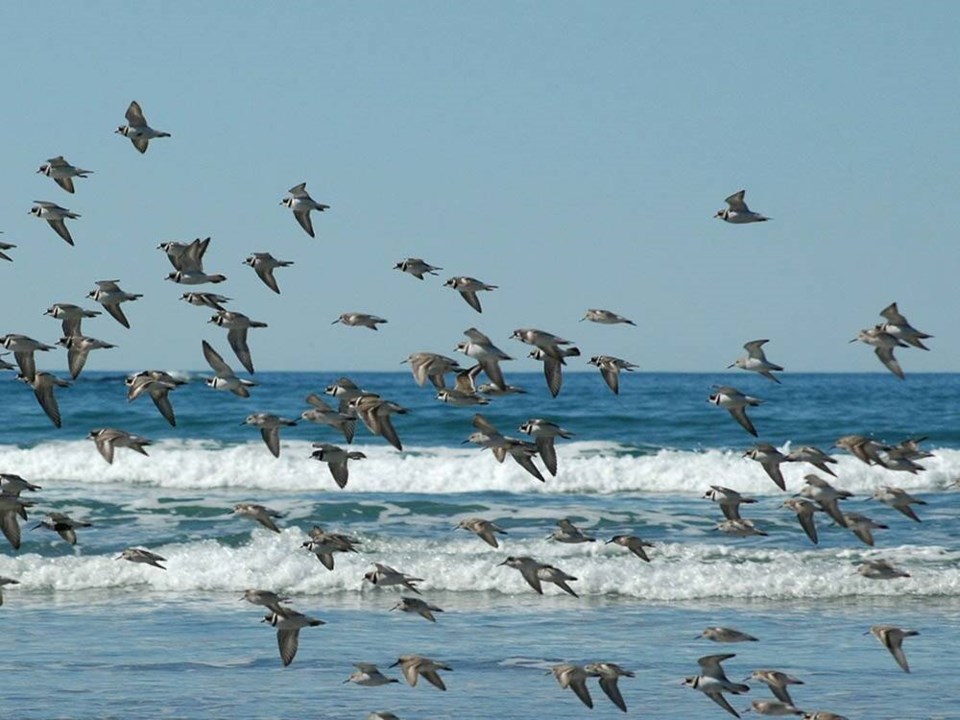Scientists are keeping a close eye on B.C.’s seabird population as a marine heat wave in the Pacific Ocean is expected to cause a mass die-off.
“We’ll probably see the effects of this sea surface warming in the next couple of months,” said Remi Torrenta, the B.C. project coordinator for Birds Canada, in an email Friday.
He said they expect a significant die-off this winter given the marine heat wave, but also coupled with losses from the avian flu that has hit the seabird colonies.
Torrenta was involved in a recent University of Washington study that concluded seabirds in the Pacific Northwest are at risk of mass die-offs from a warming ocean, especially during an El Niño or a marine heat wave because of climate change.
The study found that between 2014 and 2019, there were five mass die-offs. During these events the birds died of disease or starvation, which scientists link to a warmer ocean.
In B.C. alone, there were two major die-offs related to marine heat waves during the study’s time period: one in 2014, and the other in 2016, notably the hottest year on record globally and also an El Niño year. The World Meteorological Organization declared in July that El Niño had begun.
Earlier this week, scientists said the ocean temperatures off B.C.’s coast were 4 C warmer than normal because of a heat wave that started in May. They are concerned because it could harm all coastal ecosystems with algae blooms, which can increase bacteria and disease and cause mass die offs of many species.
William Cheung, director of the institute of oceans and fisheries at UBC, told Postmedia he was very worried about what will happen to fish and intertidal organisms like shellfish during this heat wave.
He said marine heat waves have grown more frequent and more severe because of climate change.
“I think this highlights the challenges that we are facing with the changing environment. This year we have seen record temperatures, including July, the hottest on record,” said Cheung.
“These temperature extremes are really pushing the limits of many organisms, including those in the oceans beyond their limits to accommodate those temperatures.”
Torrenta said marine heat waves can created harmful algae blooms, which can lead to more disease outbreaks. Many marine birds can starve because food sources such as fish and plankton become scarce.
The U.S.-based National Oceanic and Atmospheric Administration, which has been tracking a steady climb in ocean temperatures since April, says it has been watching for harmful algal blooms.
Large marine heatwaves have occupied the eastern North Pacific for much of 2023 but until now have remained far offshore, the NOAA said.
The World Meteorological Organization says global average sea surface temperatures have continued to rise this year and reached record high levels in July. For the month, global average sea surface temperatures were 0.51 C above the 1991 to 2020 average.
“We just witnessed global air temperatures and global ocean surface temperatures set new all-time records in July. These records have dire consequences for both people and the planet exposed to ever more frequent and intense extreme events,” said Samantha Burgess, deputy director of the Copernicus Climate Change Service, in a statement.
Burgess said 2023 is the third warmest year to date and the global temperature in July was 1.5 C above preindustrial levels.
“Even if this is only temporary, it shows the urgency for ambitious efforts to reduce global greenhouse gas emissions, which are the main driver behind these records,” she said.



